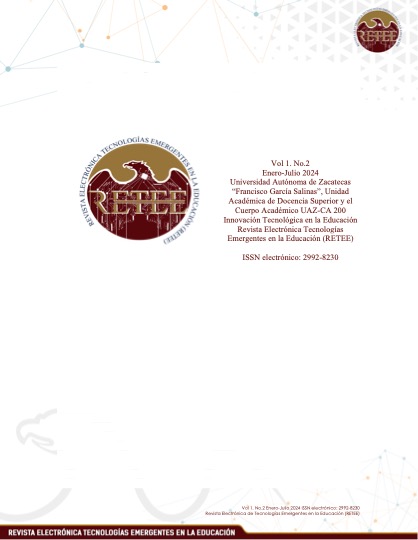Development of an Online Course on Cloud Computing, Using the ASSURE Instructional Model in Moodle for Students
Published 2025-01-08 — Updated on 2025-01-28
Keywords
- Virtual learning environments,
- Digital divide,
- Cloud computing,
- Education,
- Moodle
- ASSURE Instructional Model ...More
Copyright (c) 2025 Erick Rodolfo Cárdenas Urias, Eduardo Rivera Arteaga

This work is licensed under a Creative Commons Attribution 4.0 International License.
How to Cite
Abstract
This document highlights the importance of cloud-based tools for the development of an online course within the Moodle platform, and the designed structure works to carry out research and analysis. It is important to note that the purpose of the course is to understand that today file sharing is becoming a basic need inside and outside of companies and schools. However, the Moodle platform serves as the technological intermediary between the teacher and student within the virtual learning environment, with this means of communication facilitating access to the units that have been carefully chosen for its preparation. Nowadays, we are betting on this service which makes it easier for users to carry out their work and/or school activities. Currently, the infrastructure of these services is being increasingly requested due to the high demand due to the situation experienced in the world with SARS-COV 2. The main idea of this course was to carryout the activities within an environment virtual learning, with the support of the tools offered by cloud computing, the ASSURE instructional model was used, aimed at students from the Faculty of Administrative Sciences of the Autonomous University of Baja California. The results of the pilot test were positive and enriching, leaving feedback that will serve to generate a more solid and effective course.
Downloads
References
- Areitio, J. (2010). Recomendaciones para iniciar en la computación en la nube. En Protección del cloud computing en seguridad y privacidad (págs. 42-48). España: Revista española de electrónica.
- Dolores, M., & Dámaris, C. (2015). En Plataforma tecnológica contrducción de contenidos digitales para un posgrado virtual (págs. 369-379). México: Ra Ximhai.
- Jiménez, E., & Zoylen, F. (2021). En Plataformas virtuales en la educación superior en tiempos de COVID-19 (págs. 1-20). Costa Rica: Actualidades Investigativas en Educación.
- Jórdan, Peres, & Galperin. (2013). Banda ancha en América Latina: más allá de la conectividad. En Banda ancha en América Latina: más allá de la conectividad (págs. 4-351). Chile: CEPAL.
- Joyanes, A. L. (2012). Computación en la nube. En Computación en la nube, notas para una estrategia española en cloud computing (págs. 89-111). España: Universidad Pontificia de Salamanca.
- McAnally, S., & Organista, J. (2007). Educación en línea. En S. McAnally, & J. Organista, La educación en línea y la capacidad de innovación y cambio de las instituciones de educación (págs. 82-84). Guadalajara: Apertura.
- Microsoft. (2012). Cómputo en la nube: nuevo detonador para la competitividad de México. En Cómputo en la nube: nuevo detonador para la competitividad de México (págs. 1-59). México: Centro de Investigación en Política Pública.
- Orozco, & Jacobs. (2017). ¿Cómo la computación en la nube cambiará el mundo? En La nueva era de los negocios: computación en la nube (págs. 172-191). Venezuela: Universidad privada Dr. Rafel Belloso Chacín.
- Papillón, C. A. (2009). Plataformas LMS. En Las plataformas e-learning para la enseñanza y el aprendizaje universitario en internet (págs. 45-73). Madrid: Universdad Complutense de Madrid.
- Stella, G. (2019). Proveedores de Servicios en la Nube. En Computación en la Nube: Algunas Consideraciones Técnico - Jurídico (págs. 147 - 168). Perú: Lex.


